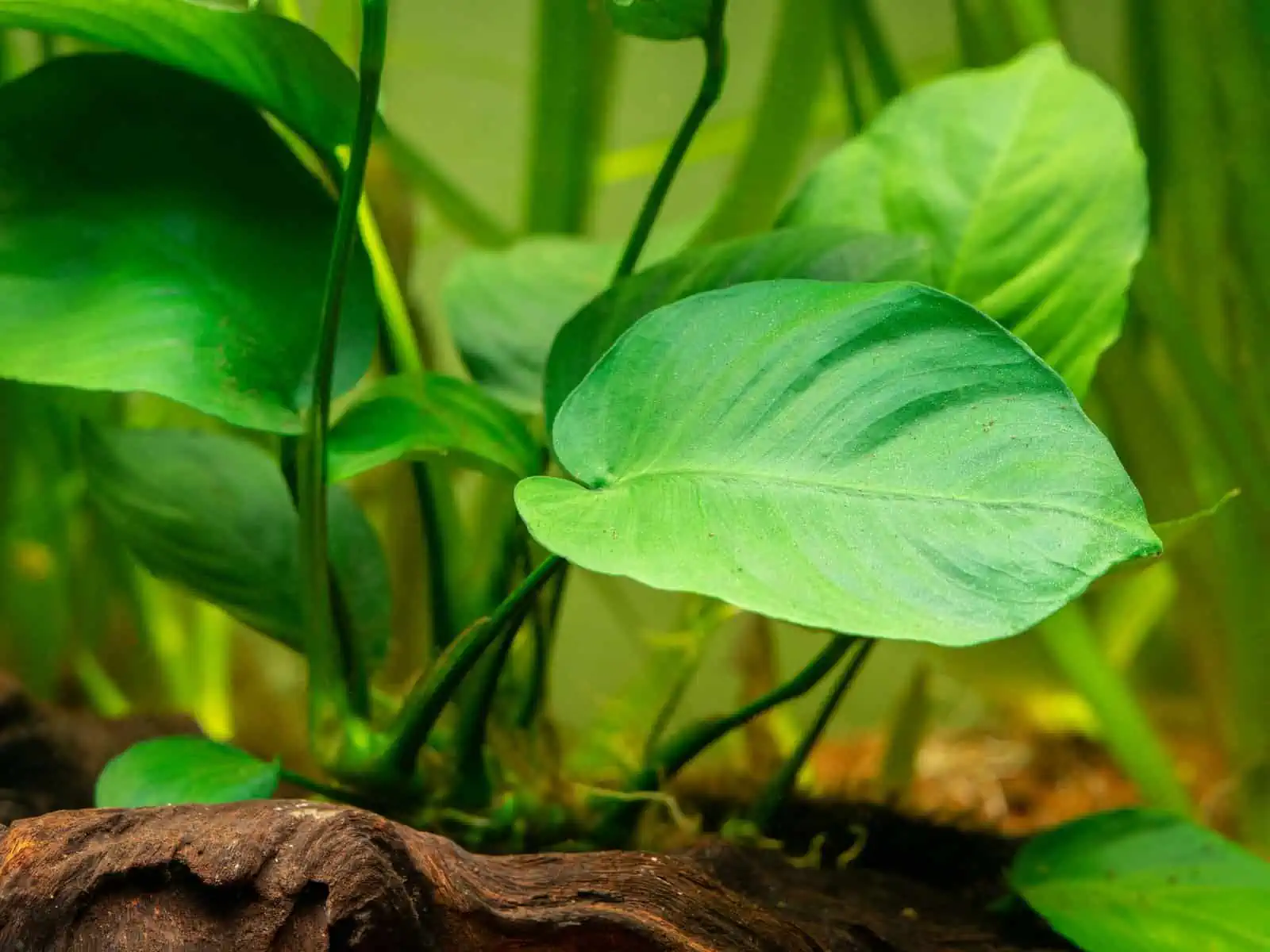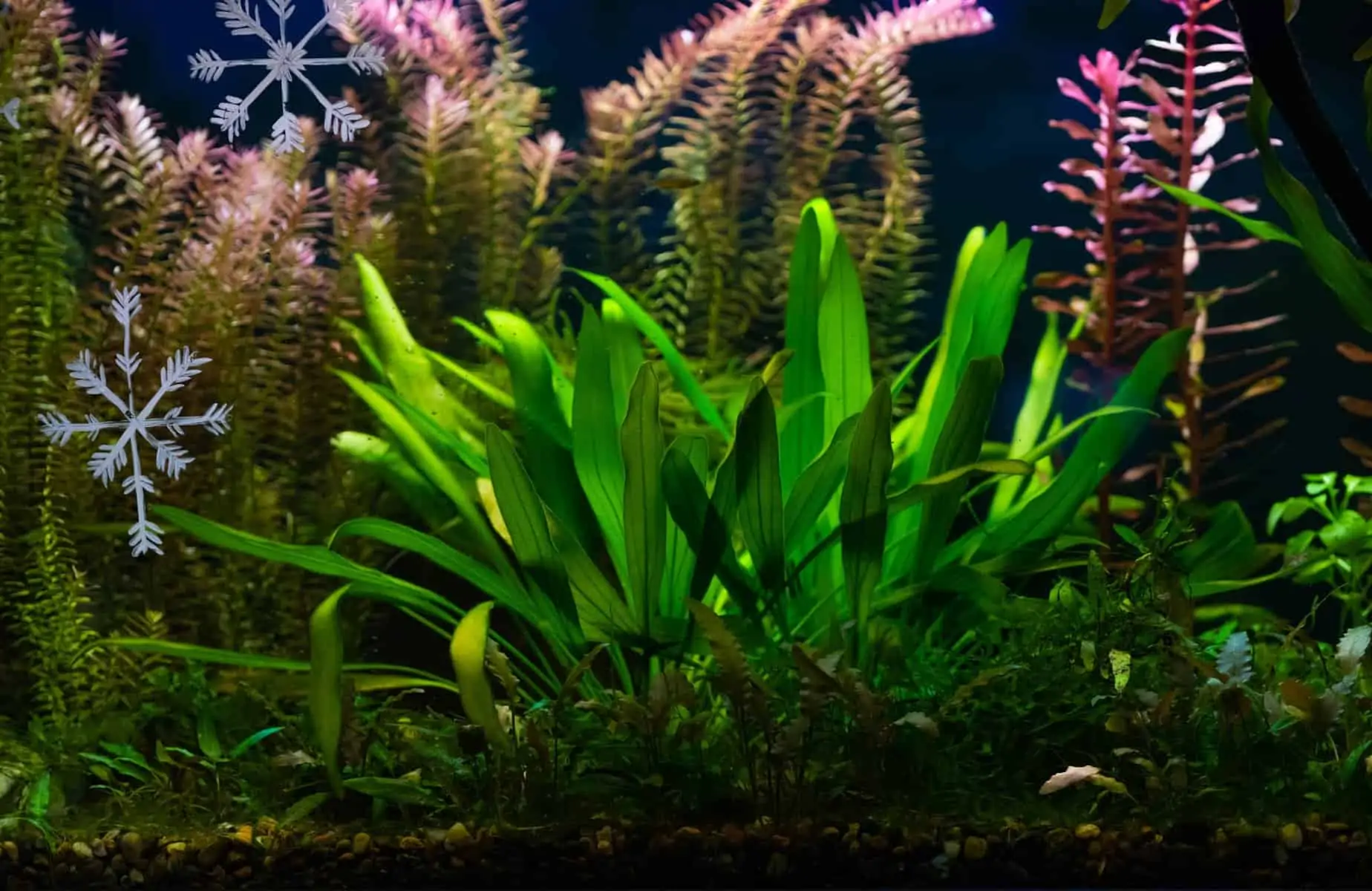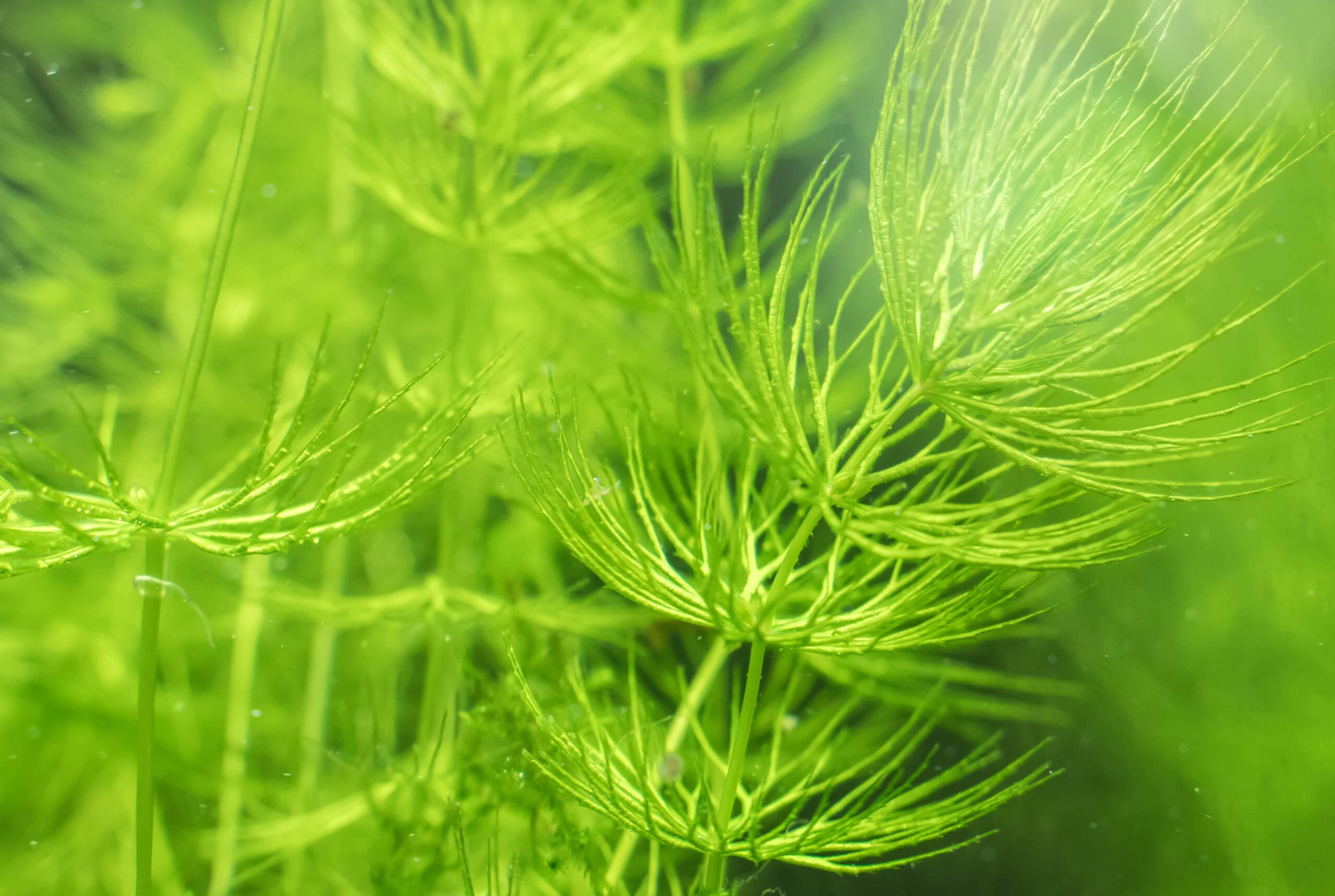Nothing sets off a tank full of beautiful tropical fish like a lush backdrop of healthy aquatic plants. But maintaining a thriving planted aquarium takes time, effort, and attention to detail. Don’t let that put you off! Even a complete beginner can successfully keep a planted fish tank, provided you choose types of plants that are easy to care for and get into a few simple habits.
Keep reading to discover the daily practices and consistent routines that set successful planted tank owners apart, and learn how these habits contribute to lush, healthy aquatic gardens that you and your fish will love!
Key Takeaways
- Daily and consistent routines are vital for a healthy planted aquarium. These include daily observation to catch health and disease early, quarantining new plants to prevent importing pests and diseases into your tank, and choosing beginner-friendly plant species.
- Regular maintenance routines, such as water testing, water changes, and pruning, alongside a proper fertilization routine, ensure your aquarium plants and fish thrive.
- Equipment care, correct fish feeding, and continuous learning are essential components of successful planted tank keeping, helping maintain a balanced and beautiful aquatic ecosystem.
Daily Observation

All aquarists know that checking the condition and behavior of your fish every day is crucial. Daily observation is also essential for a planted tank. This allows you to catch any issues early on, such as signs of algae growth, nutrient deficiencies, or brown, unhealthy leaves.
If you spot problems, play detective to work out what’s causing the issue and take steps to correct it.
Stress is one of the most common plant stressors, especially when the plant has been relocated to a new environment. Signs of stress include:
- Yellowing leaves
- Bunch plant stems rotting
- Losing leaves (melting)
- Dying leaves
Some plants disintegrate almost completely within a few days of planting. Although that’s alarming, most species will come back, provided their root system is still intact. Snip off mushy stems from bunch plants, and replant the solid sections carefully.
Quarantine New Plants

Whenever you buy new plants to add to your collection, you must quarantine them for a few weeks before introducing them to your main tank. This allows you to monitor the plants for signs of disease. After all, the last thing you want to do is bring a disease into your tank that could wipe out your healthy aquatic plants.
It’s also a good idea to rinse the plants in clean water containing a mild antiparasite treatment or bleach solution. This can help to get rid of any unwanted hitchhikers that might be clinging to the plants, preventing parasites or bacteria from getting into your tank and infecting your fish.
Take a peek underneath plant leaves and remove any snails or snail eggs that might be lurking there. The last thing you want is a plague of pest snails decimating your plants by munching on their fresh, young shoots.
Once you’re happy that your new plants are healthy and pest-free, you can put them into your main tank.
Tissue Cultured Plants
If you want to avoid quarantining your new plants and are impatient to get your tank stocked, you could consider choosing tissue-cultured specimens. Unlike bunch plants or those raised in pots, tissue cultures are guaranteed to be pest-free since they aren’t stored or grown in water containing fish.
The main drawback to tissue-cultured plants is that they tend to be small, so you must be patient and allow them time to grow.
Wild Plants
Never harvest plants from the wild environment! Although it might be tempting to do that, bringing wild plants into your fish tank is never a good idea.
Plants taken from nature often harbor pests and plant diseases that could infect your aquarium. In addition, many of our waterways are polluted with chemicals, which you definitely don’t want to bring into your tank.
Some plant species growing in ponds and ditches might look very similar to those in your local fish store but are, in fact, very different. Many pond species will quickly cover the water’s surface, giving you a big headache when it comes to maintenance, taking over your aquarium, and smothering other slower-growing species.
Finally, in some states, it’s illegal to harvest wild fauna and flora without a permit, so you could find yourself in deep water with local law enforcement.
Choose the Right Plants
If you’re new to keeping a planting aquarium, be sure to choose beginner-friendly species that aren’t too challenging to care for. That way, you’ll be less likely to make newbie mistakes, and you’ll get the maximum, stress-free enjoyment from your tank.
In addition, if you keep fish that enjoy nibbling on young plant leaves, try to choose plant varieties that are hardy, tough, and resistant to the fish’s unwanted attention.
The experts in your local aquarium shop will provide you with plenty of advice. However, the following are all good choices.
Anubias

Anubias is a very hardy, versatile plant that grows happily in low-light conditions and needs very little supplementation with nutrients or CO2.
Java Fern

Java fern is another easy-to-care-for plant that is perfect for beginners. It can grow in low light and doesn’t require any special substrate to thrive.
Amazon Sword

This plant is a popular choice for beginners because of its hardiness and ability to grow quickly when provided with ideal conditions.
Cryptocoryne

Cryptocoryne comes in several varieties and is a low-maintenance plant that’s ideal for beginners. This plant prefers low to medium light and can grow in a variety of substrates.
Hornwort

This fast-growing plant is perfect for beginners who want to see quick results. It can grow in a variety of conditions and requires no special care.
Regular Water Testing

Regular water testing is an essential part of the fish-keeping hobby. Your fish will suffer from poor health if the water in your tank is polluted or outside their preferred parameters in terms of pH, temperature, and water hardness.
Testing the water parameters regularly is also crucial for a healthy planted aquarium. Again, test the pH, KH (carbonate hardness), ammonia, nitrite, and nitrate levels. Different plant species need different water conditions to thrive, so carefully research your chosen varieties to determine their needs.
Regular Water Changes

Weekly or biweekly water changes are essential in a fish tank to dilute the levels of nitrates and phosphates in the water, remove organic waste, and keep the environment safe and healthy for your fish.
But you must also carry out regular water changes to keep the environment stable for your plants. As mentioned above, changing some of the water removes the accumulation of waste products. It also helps to replenish essential minerals and carbonates removed from the water. Remineralization stabilizes the pH and KH values of the tank and acts as a reset of plant nutrients and fertilizers in a planted tank.
Pruning and Trimming

Left to their own devices, plants will quickly become overgrown and leggy. More vigorous species can choke slower growers, ruining the look of your tank and preventing fish and invertebrates from moving freely around the tank bottom.
One habit you must get into is the routine pruning and trimming of your aquatic plants. This helps to maintain their shape, encourage healthy growth, and prevent overcrowding. Removing dead or decaying plant matter also reduces the risk of algae outbreaks and helps to maintain water quality.
Many plants can be propagated by snipping off cuttings or runners and replanting them in the substrate, which is an excellent way to fill a new tank with plants.
Fertilization Routine

Plants create energy for growth and reproduction through photosynthesis. They also need nutrients as fuel. In a fish tank, nutrients are provided in the form of fish waste and nitrates, which the plants extract from the water column via their leaves or from the substrate through their roots.
Depending on the plant species, you might need to follow a fertilization routine tailored to their specific needs, including supplementing the plants with liquid fertilizers, root tabs, or substrate additives.
Consistent Lighting Schedule

Plants use light for photosynthesis, which fuels their growth and encourages propagation. Most plants and fish species need between eight and ten hours of light every day to thrive, so it’s essential to maintain a consistent lighting schedule. Too much light can cause problems in the aquarium, causing explosive algae growth and stressing your fish.
In my 40 years of keeping planted aquariums, I’ve always found the best strategy to adopt is to routinely provide my aquarium with a natural daytime and nighttime lighting schedule. That means switching on the tank lights every morning when I get up and turning them off again in the evening before bedtime.
Of course, sometimes work and other commitments can prevent you from manually adjusting your tank lighting. Don’t panic! Most modern LED aquarium lighting units come with a built-in timer, allowing you to set your lights on and go off when needed. You can also adjust the brightness and color of the lights to suit your fish and plant species.
A simple timer plug works fine if you can’t afford a brand-new lighting unit. Simply set the timer, plug in your lighting unit, and plug the whole thing into the mains power outlet. You’ll find these devices for sale in most good DIY or homewares stores.
Manage Algae Growth

Algae can quickly become a total pain in a planted aquarium if its growth and spread are not kept in check.
A little bit of algae is actually quite good for your fish, giving them something to graze on between feeds and providing a natural food source. However, if algae growth is not controlled, a coating of green slime can grow over your decorations, viewing panes, substrate, and plant leaves.
Algae growing on your plants cuts off light and steals nutrients, preventing them from growing and eventually killing them.
However, you can control algae relatively easily by controlling nutrient levels, maintaining proper water circulation, and introducing algae-eating organisms like snails or shrimp to help keep the green menace under control.
The most important thing to remember is to keep your fish tank out of direct sunlight. Sunlight is the prime cause of algal blooms in fish tanks, and it’s also bad news for your fish. Direct sunlight hitting your aquarium can cause hotspots, potentially leading to temperature shock for your aquatic pets, a condition that can be fatal.
Equipment Maintenance

Although your plants will absorb nitrates from the water for nutrition, too many pollutants in the habitat will change the water parameters and cause problems for your fish and your plants.
Every aquarium containing fish and plants should have a filtration system that’s adequate for the tank’s size and stocking levels. You’ll need to clean the filter media every couple of weeks by rinsing it in dirty tank water, cleaning the pump’s impeller, and replacing spent filter media or cartridges as recommended by the manufacturer.
Most aquatic plants thrive in warm water, so you’ll need a heater to keep the water at the optimal temperature for your fish and plants. Use a reliable aquarium thermometer to monitor the water temperature daily and check the heater if it fluctuates.
Correct Fish Feeding

Overfeeding your fish can lead to a build-up of excess waste, cause nutrient imbalances in the aquarium, fuel algae growth, and contribute to health problems for your fish.
Most fish species should be fed once or twice daily, offering them only what they will eat in a few minutes. Take care to remove uneaten food immediately with an aquarium vacuum cleaner. It’s also a good idea to include one day every week when you don’t feed your fish anything. That fasting day allows your fish’s digestive tract to process any remaining food before adding more to the queue. A regular feeding schedule also helps provide a healthy environment for your plants.
Continuous Learning

The hobby of aquarium keeping is dynamic, with new techniques and information constantly emerging, especially when it comes to keeping plants. New species are always appearing in the hobby, and you never stop learning, no matter how long you’ve been in the aquarium-keeping game.
You can stay informed by reading books, getting involved in online planted aquarium-keeping forums, and attending aquarium club meetings. Listen to other enthusiasts’ stories and experiences, be prepared to try new things, and swap tips.
Final Thoughts
Keeping a thriving planted aquarium is not without its trials and tribulations, but you can do it by adopting the habits outlined above.
Choose plant species that prefer the same lighting levels and general water parameters as your fish. Manage algae growth and carry out regular maintenance by trimming and pruning your plants to prevent overgrowth. You must also observe your plants every day, looking for signs of disease and damage. Test the aquarium water regularly to ensure it’s within the appropriate parameters for your plants.
By adopting these simple habits, you can provide a healthy environment for your fish and your plants.


